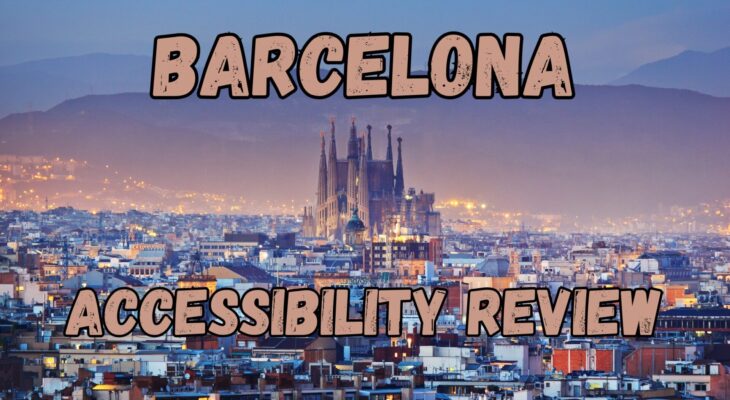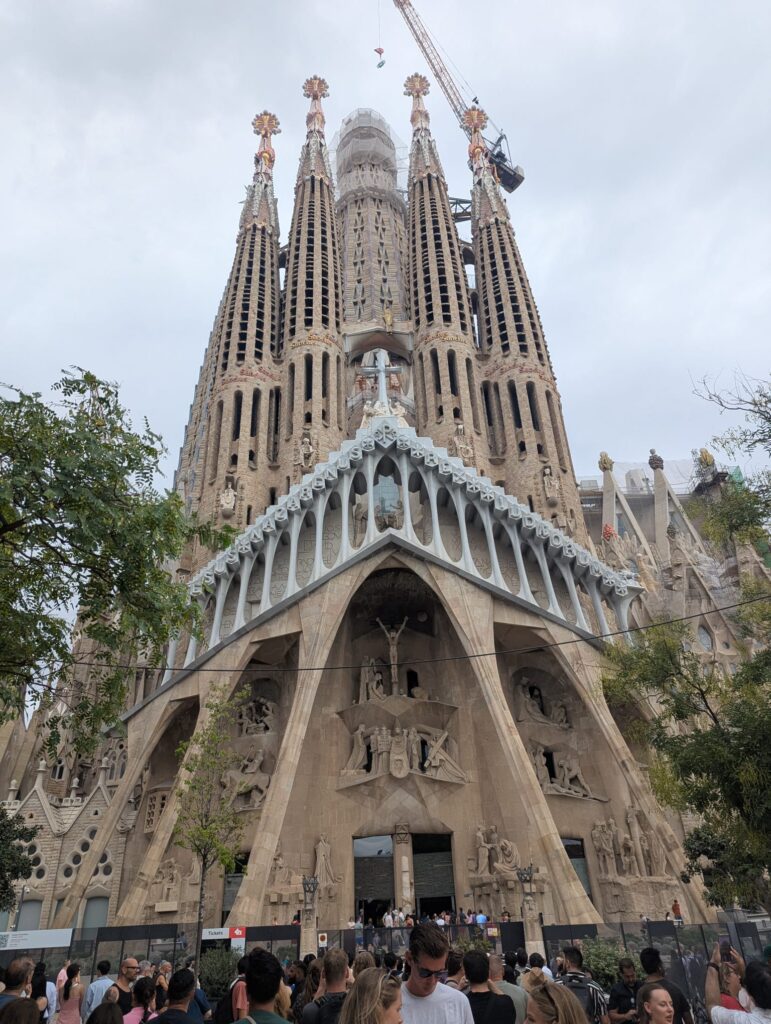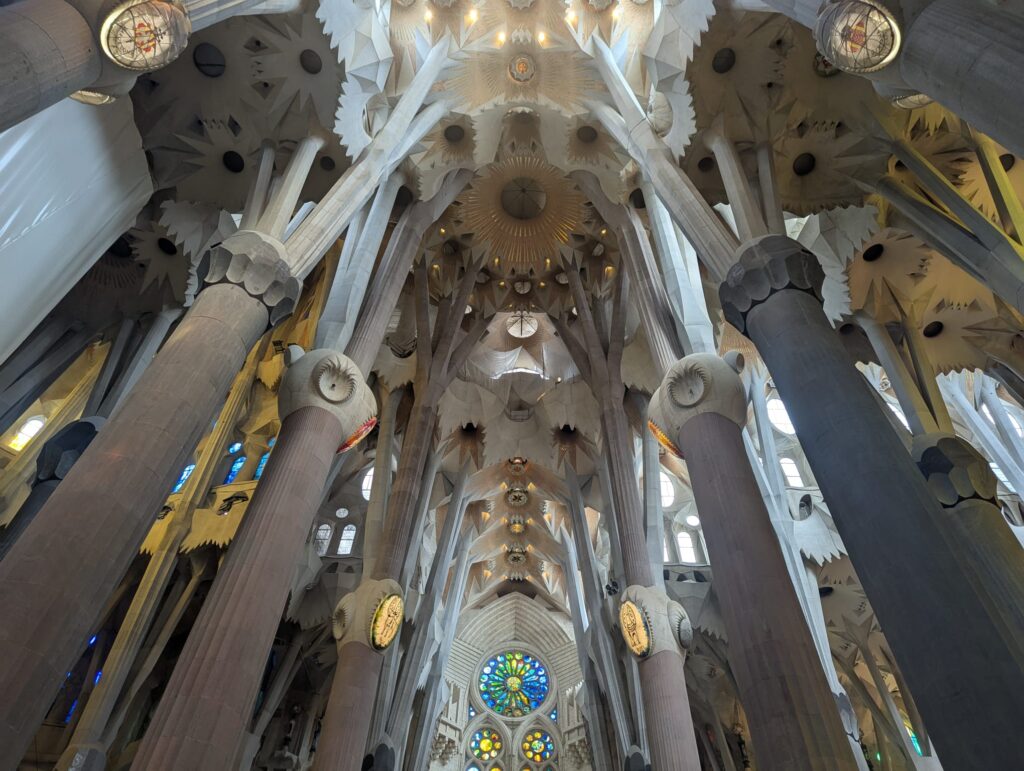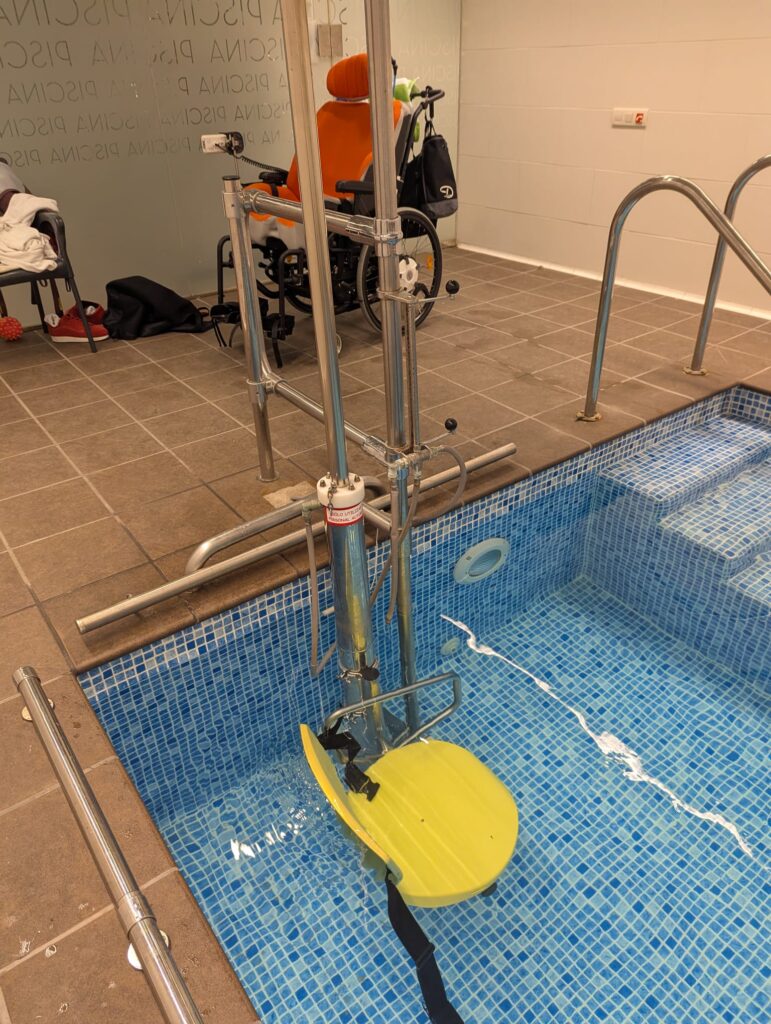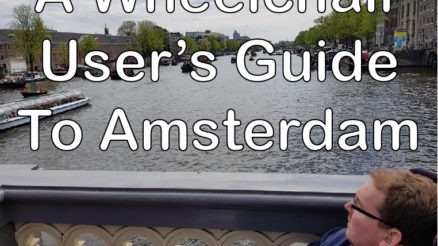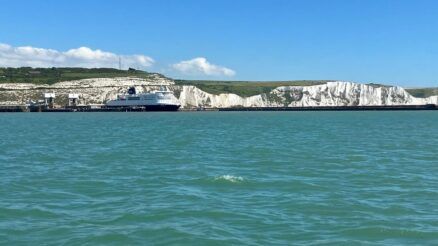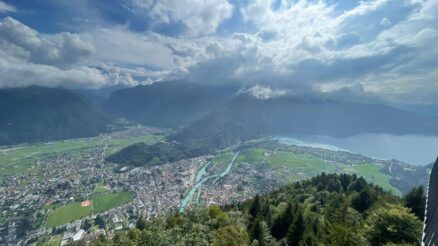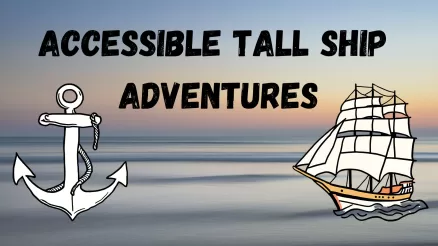In September, I visited Barcelona for one week, which was a lovely stay. In this post, I will tell you all about it.
Some facts about Barcelona
- Barcelona is the capital of the Catalonia region in Spain.
- 1.6 million people live within its city limits, much less than the 36 million visitors it receives each year
- Barcelona is located on the north-east coast of the Iberian Peninsula, right next to the Mediterranean Sea.
- Before it hosted the Olympics in 1992, Barcelona didn’t have any beaches. Sand was imported, and the land was cleared to create the accessible beaches it has today
- Barcelona is famous for its unique architecture. Antoni Gaudí created numerous buildings throughout Barcelona in his nature-inspired style. Seven of these are now UNESCO World Heritage sites.
Accommodation
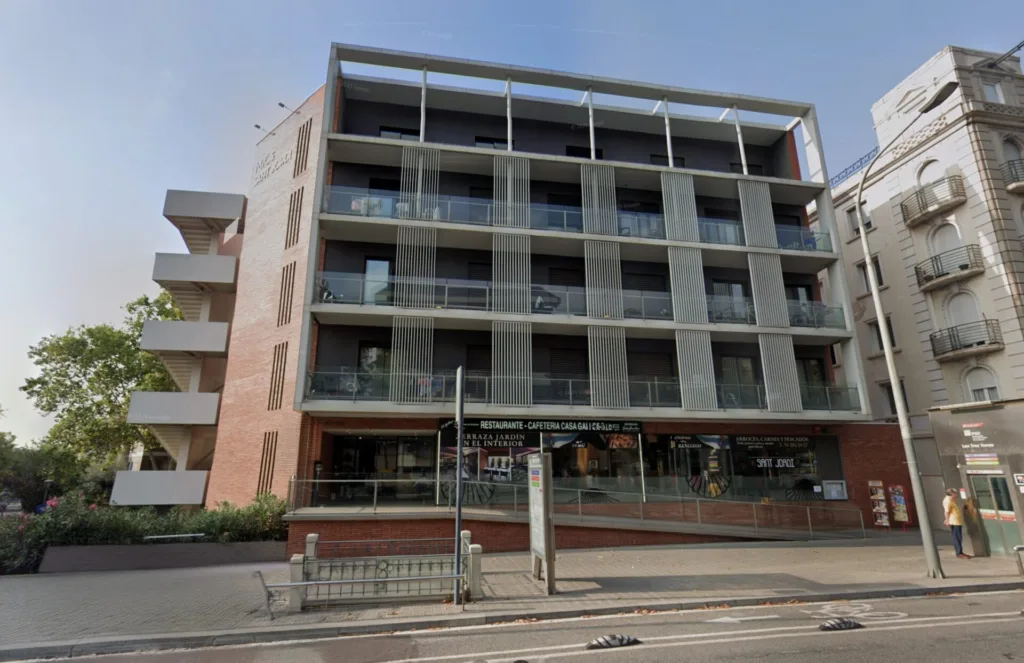
We stayed at MICS Sant Jordi, which is an apartment building with fully accessible flats. They offer 2-, 3-, or 4-bedroom flats with profile beds, wheelchair access, and hoists available for use. We stayed in a three-bedroom flat, which was perfectly sufficient for our needs. There were two bedrooms, one of which had two electric profile beds and an ensuite accessible bathroom. The other had a single bed with an ensuite bathroom where my carer stayed.
The flats also had a living/kitchen area, so we could cook our own meals sometimes if we wished. There was good air conditioning, which was very welcome because it was about 30°C every day that I was in Barcelona.
MICS Sant Jordi also offers care support if you need it, and they have a hydrotherapy pool that can be booked. More about that later on.
A nice restaurant was on the ground floor of the building, where we had breakfast every day, which was tasty.
What we did
I visited a number of places around Barcelona and saw some interesting sites. Below are some of my favourites.
Sagrada Familia
The Basilica De Sagrada Familia is a cathedral designed by Antoni Gaudí, the famous Catalan architect. It was begun in 1882, and they STILL haven’t finished it. The building is visually stunning and unlike any cathedral I have ever seen. There probably isn’t another cathedral like it in the world.
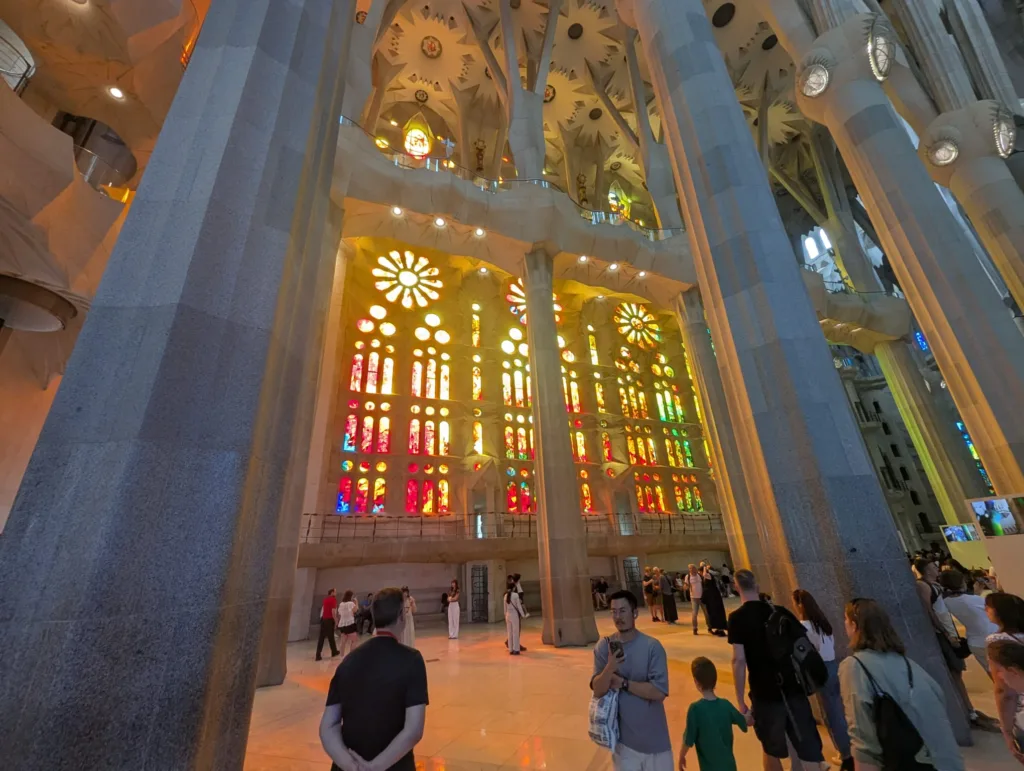
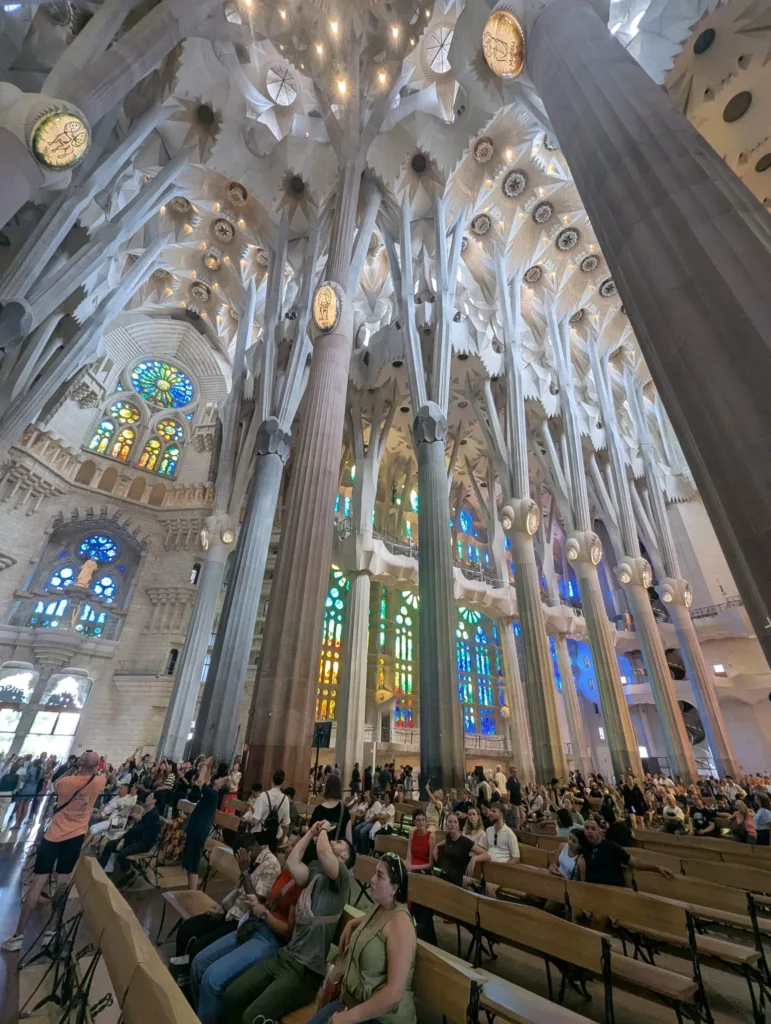
Gaudí drew inspiration from nature, incorporating various aspects of the natural world into his work. For example, inside the cathedral, the columns looked like trees, splitting towards the roof like branches.
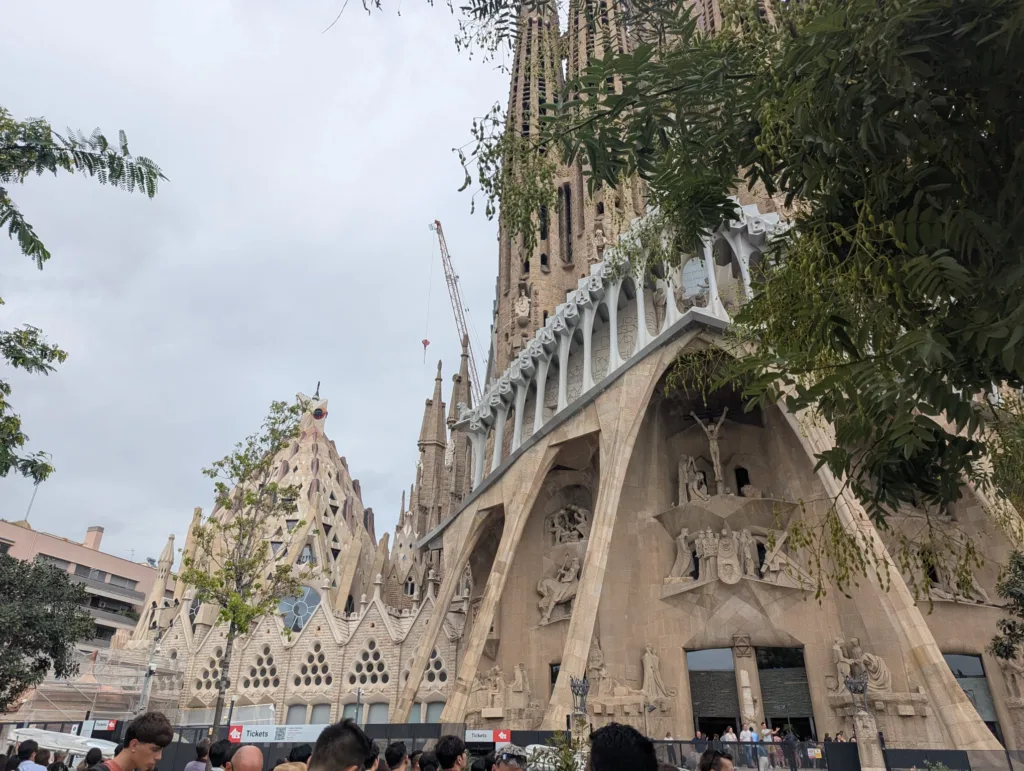
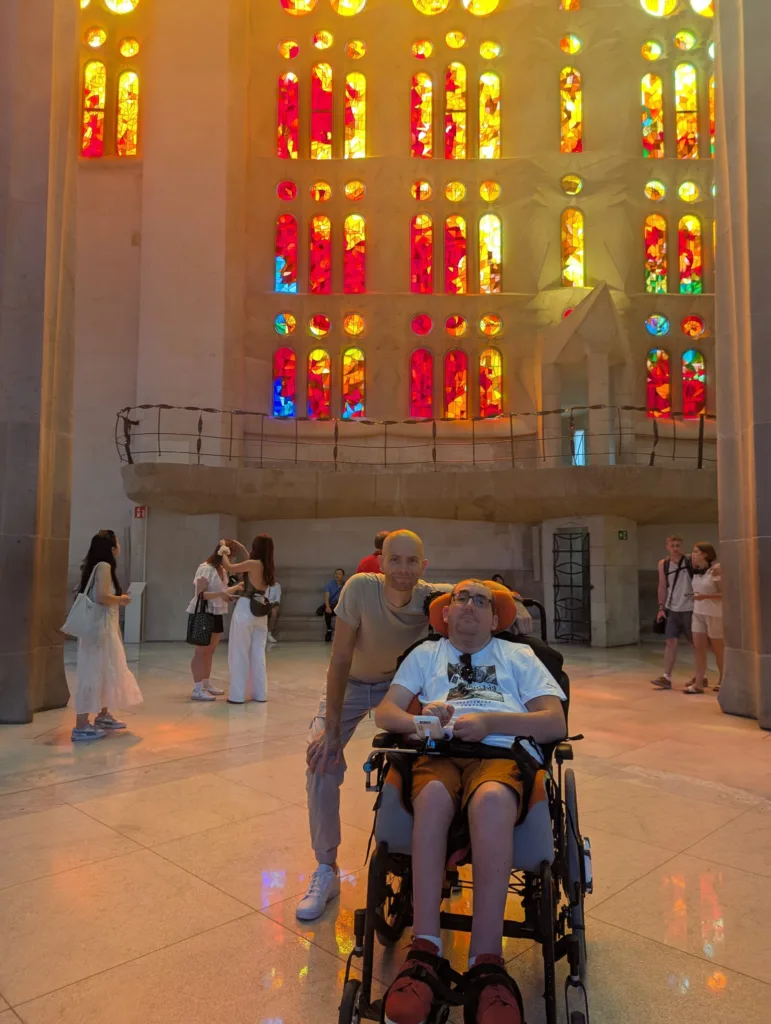
The windows were very colourful and let in lots of multicoloured light. The wheelchair accessibility of Sagrada Familia was great. I had no trouble getting around either the exhibition space or the interior of the cathedral itself. I couldn’t go up in the towers, but that is to be expected. I would have liked to spend more time exploring the cathedral, but we had to get something to eat because we were all starving.
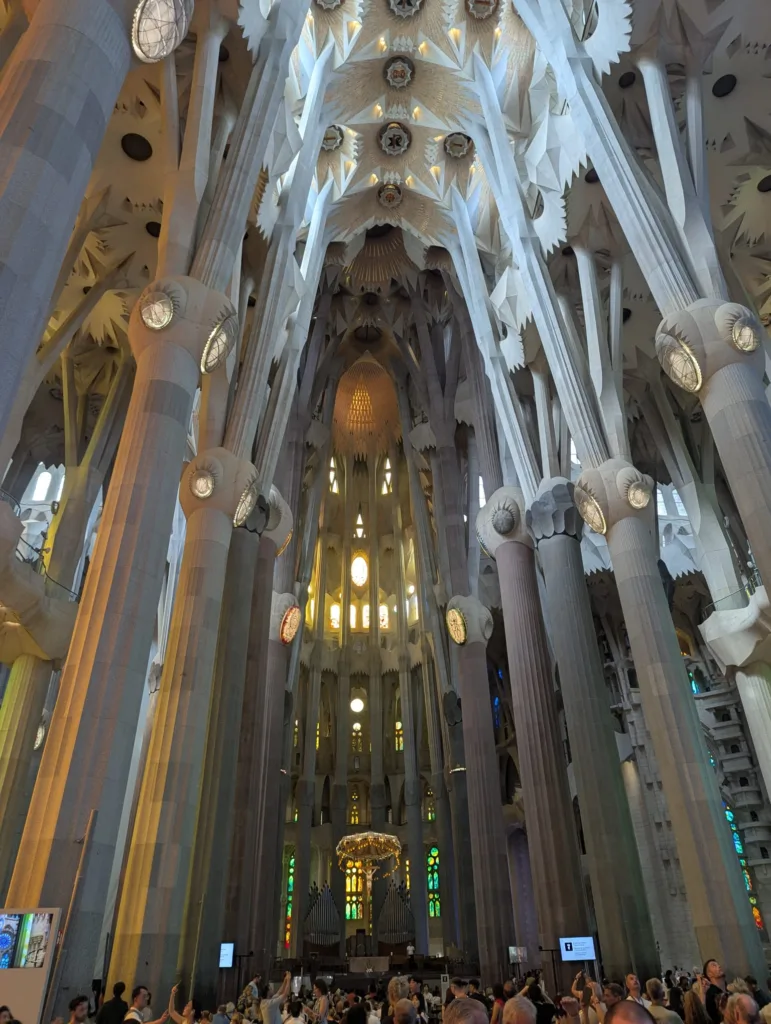

There is a good audio tour on the Sagrada Familia app that provides interesting information and guides you through different areas of the building. You can read what it says on your phone or listen to the voice, which was good for me.
Casa Batlló

Casa Batlló is another Gaudi building in the centre of the city. It was built for the Batlló family in the 1920s, and visually, it looks very beautiful. The locals call it the house of bones because the front of it seems like it’s made of bones. There are no straight lines anywhere in the building; it’s all curves on the walls and windows. The wavy roof is covered in coloured broken tiles which resemble a dragon’s back.
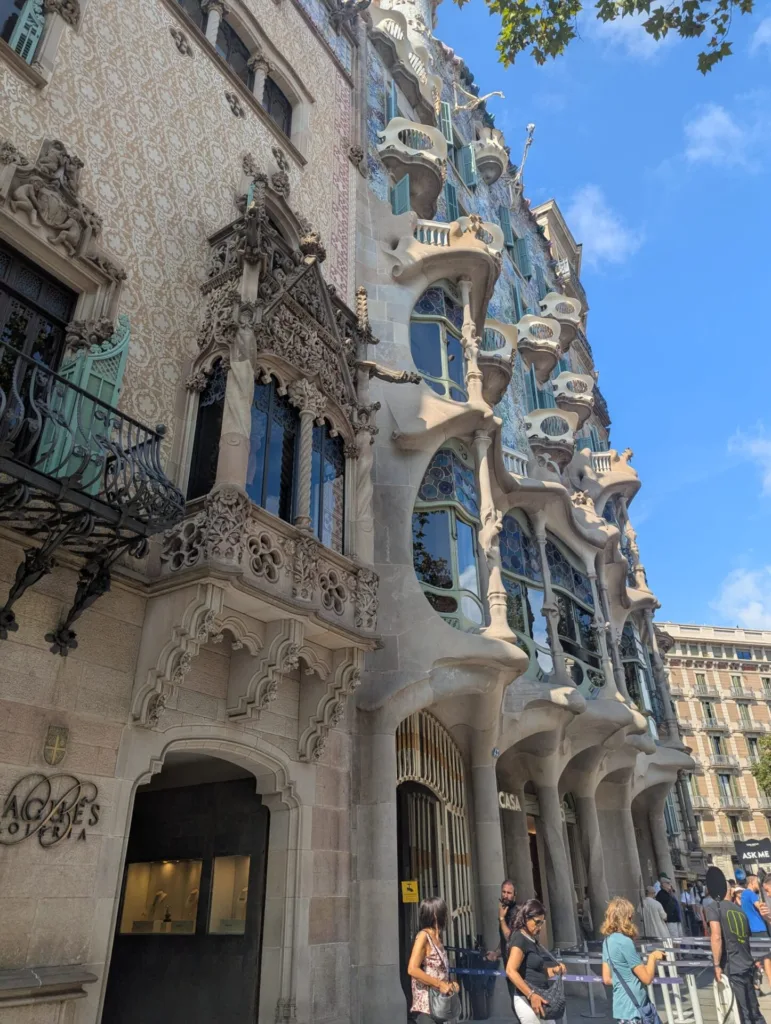
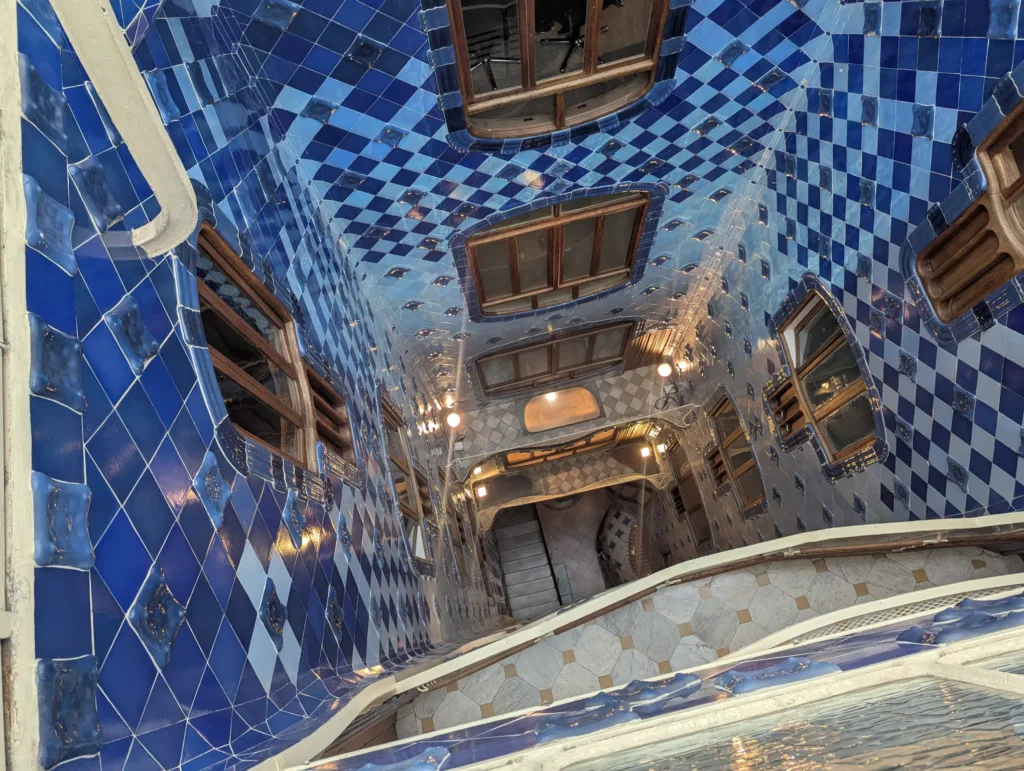
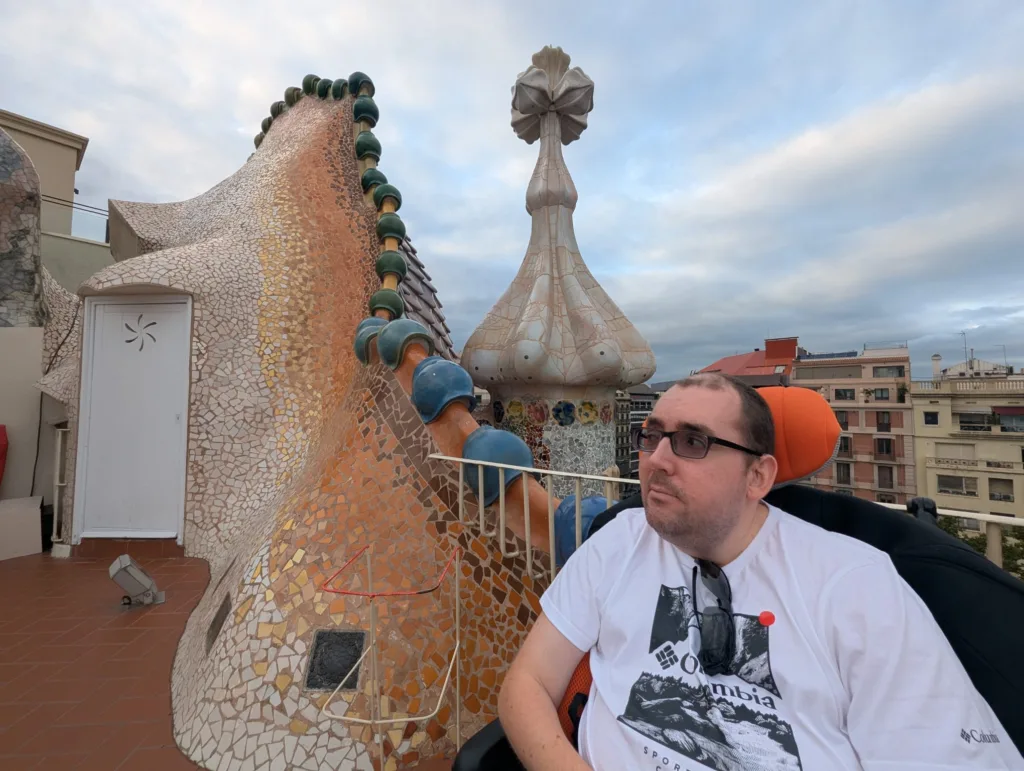
The house has good wheelchair accessibility, considering it was built in the 1920s. We had to go up in the lift through a shop next door, which was connected. The lift was a bit tight, though. But I managed to get around most of the house, which was great to see. It’s a very whimsical place.
Las Golandrinas boat trip
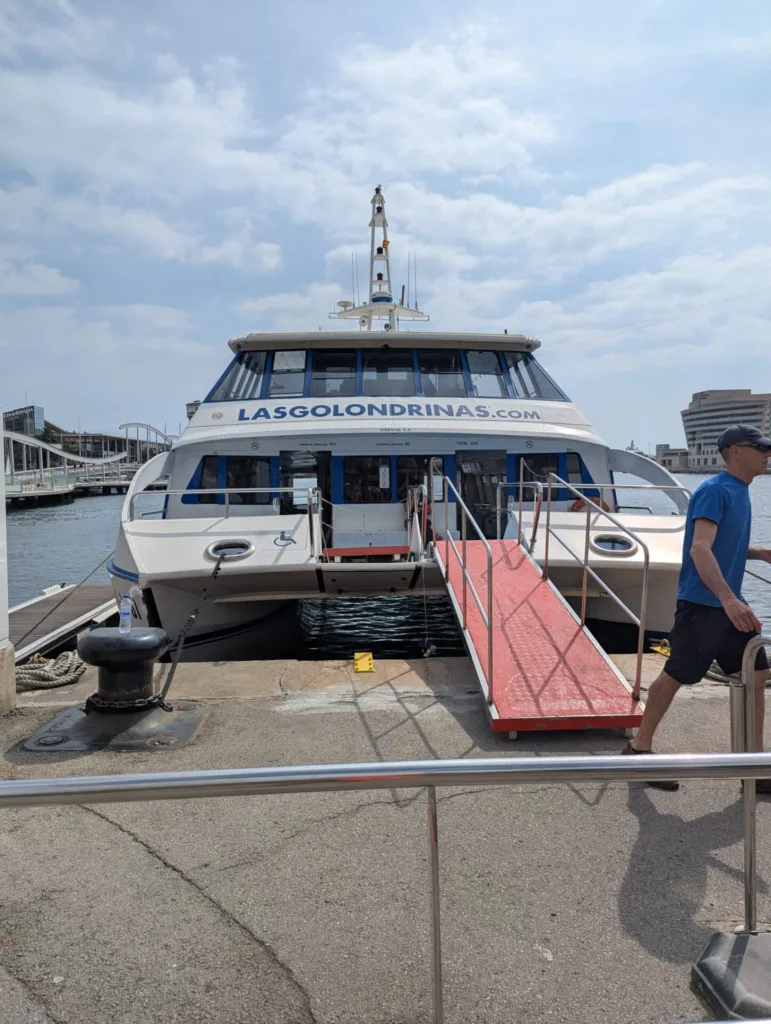
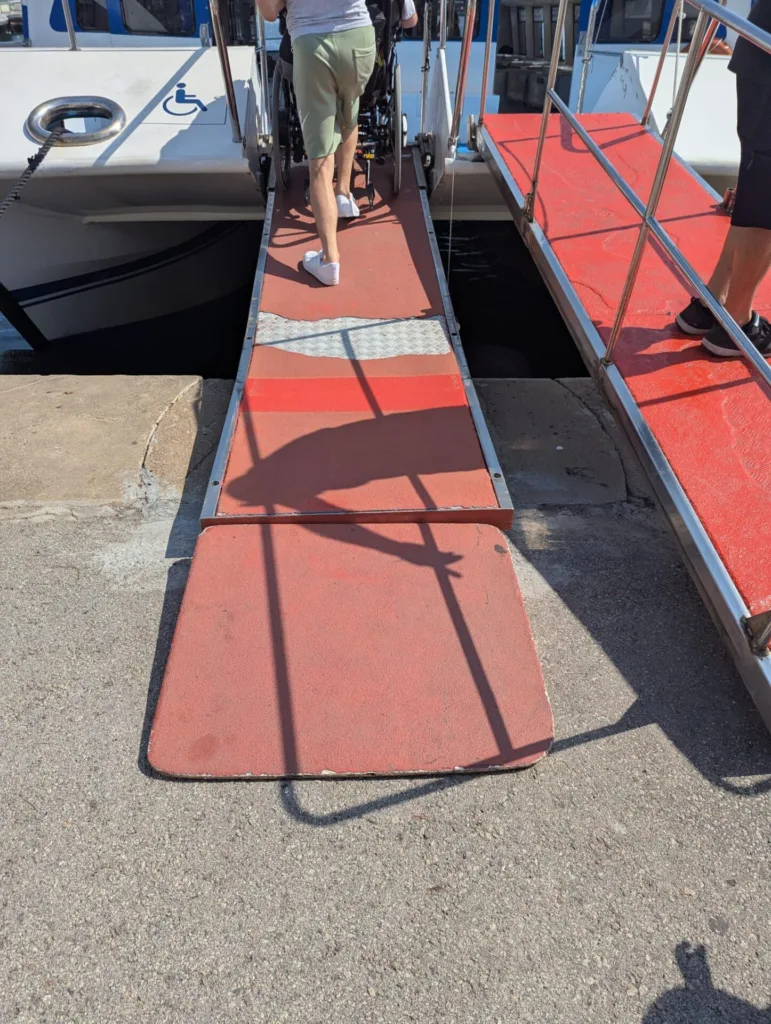
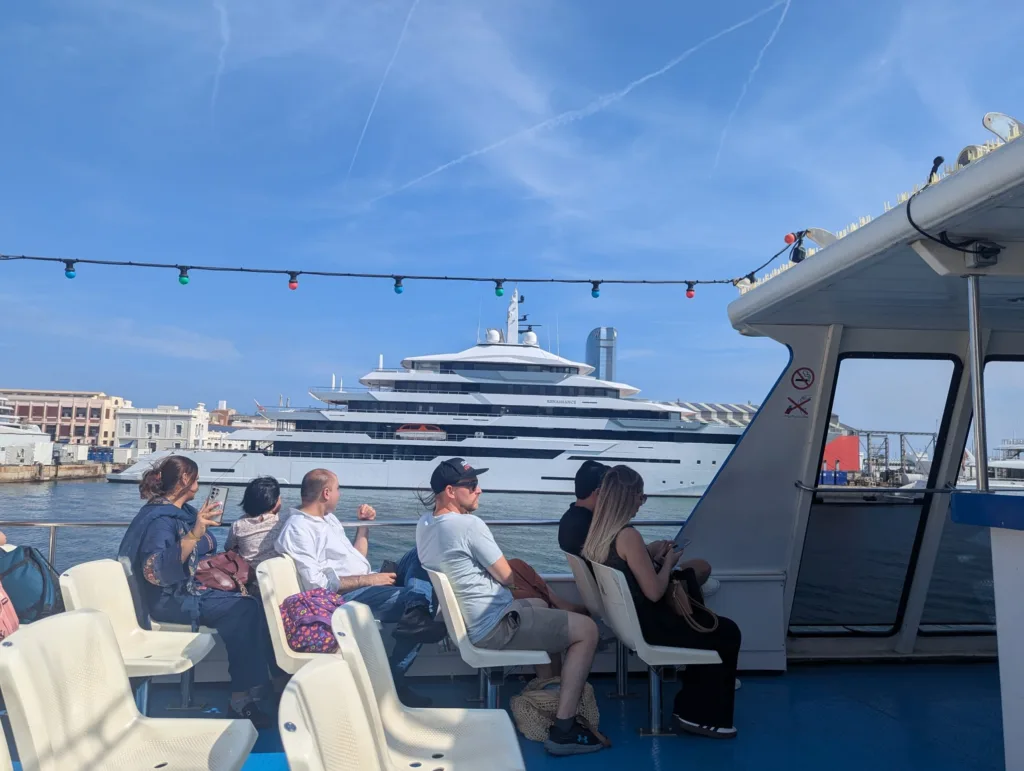
I booked a wheelchair accessible boat trip on the Get Your Guide app. It was a catamaran, and it had a removable ramp, which was enough for me to get on. However, there was a slight step at the end of the ramp.
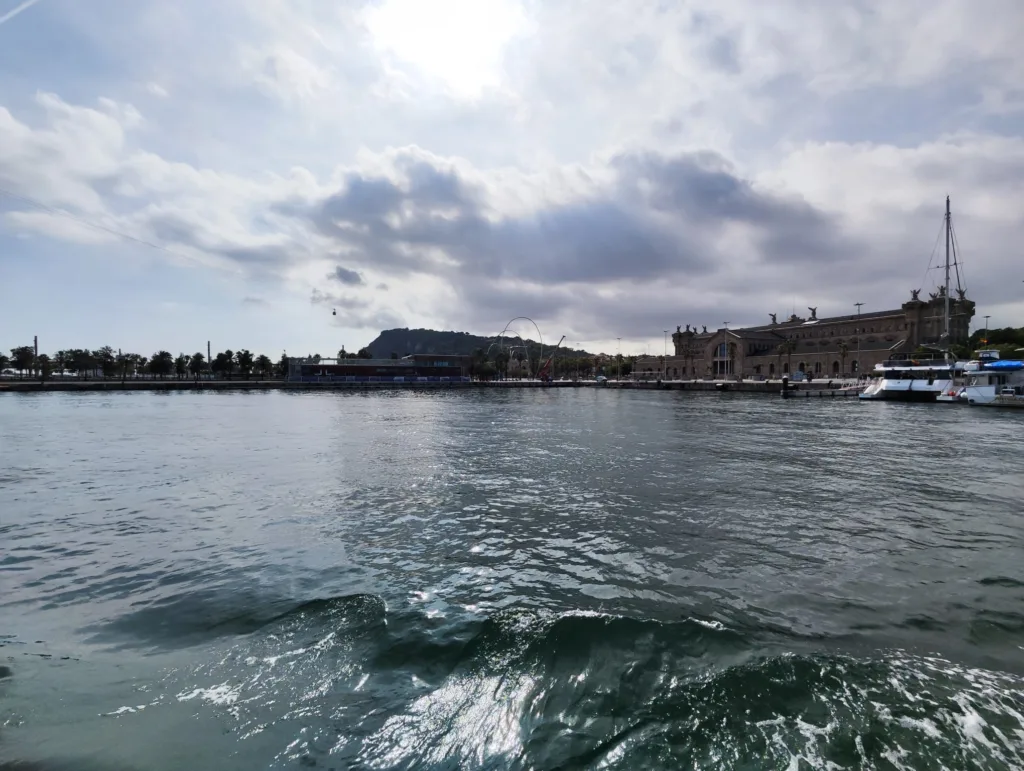

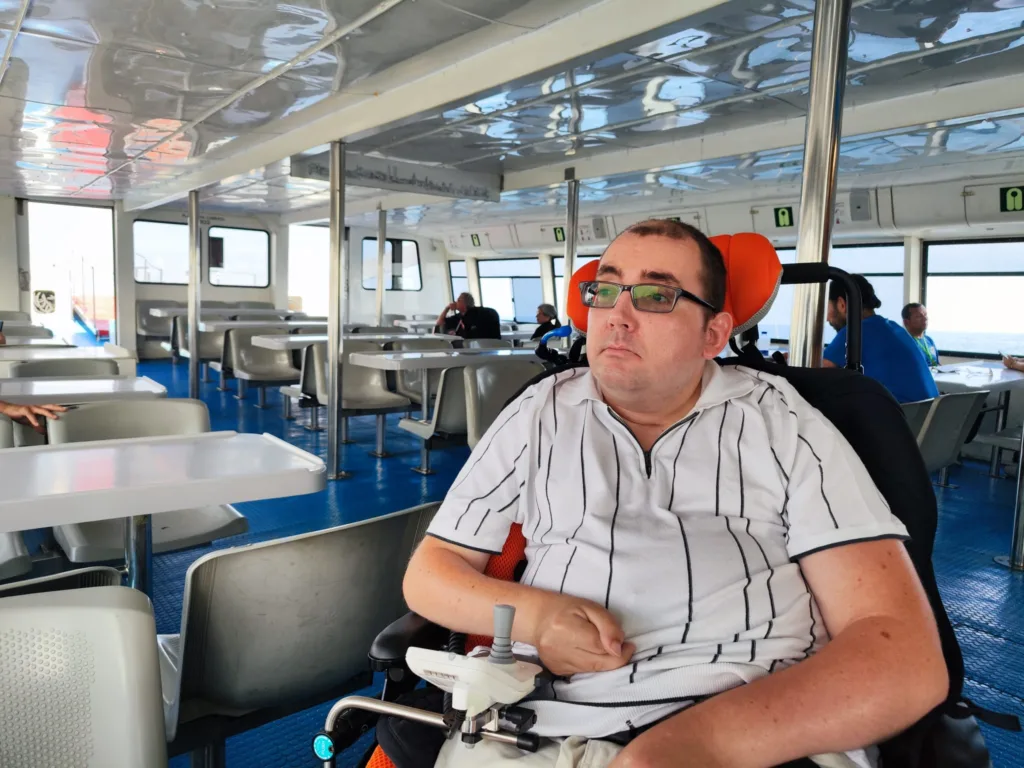
On board the boat, we sat inside most of the time next to the table and looked out the window. There was an upstairs area, but I couldn’t get up there. At the back of the boat was an accessible toilet that was big enough for my chair to fit into.
It would have been better if I had been able to sit outside to admire the view on the trip rather than just looking through the window. I probably wouldn’t go on this one again.
Nova Icaria beach

Barcelona has two beaches: Nova Icaria and Barceloneta. Both of them have good accessibility with beach wheelchairs and hoists available. I went to Nova Icaria, and they had excellent facilities. There was a wooden walkway over the sand for wheelchairs leading up to a big covered wooden area where wheelchair users could sit on the beach.
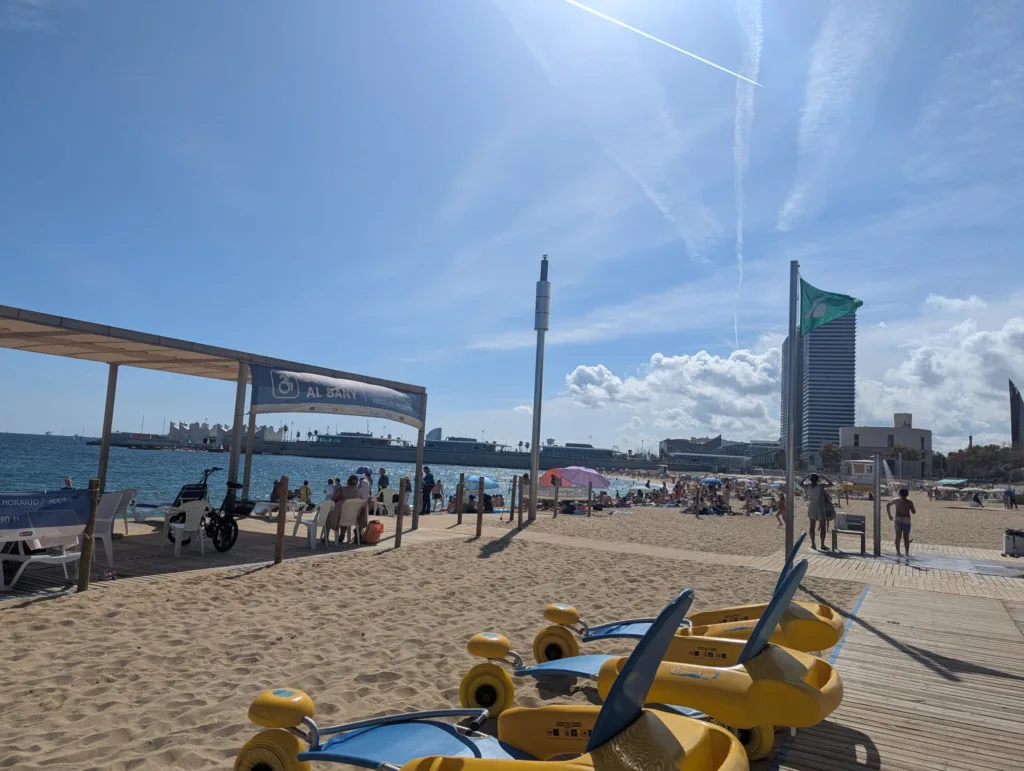
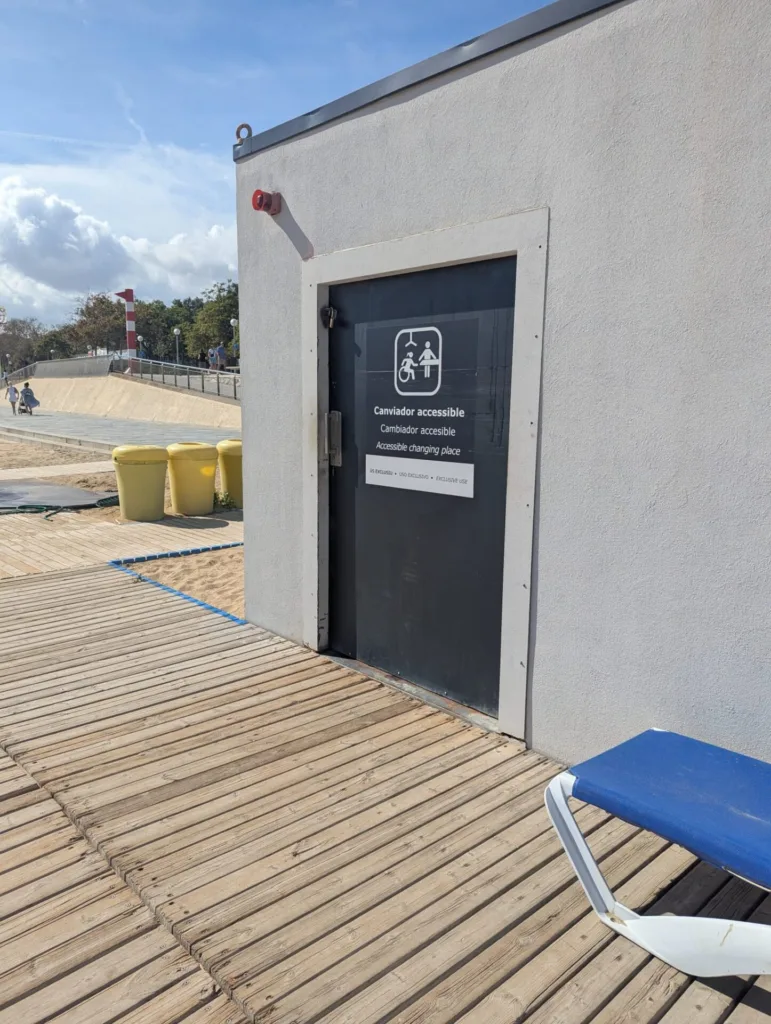
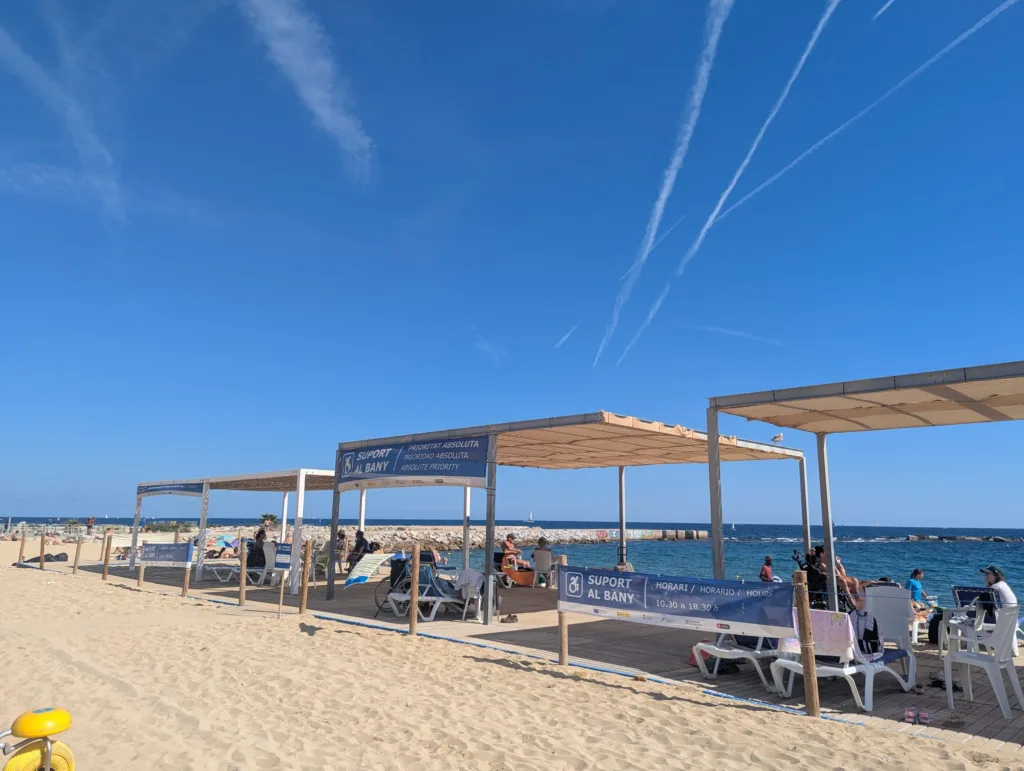
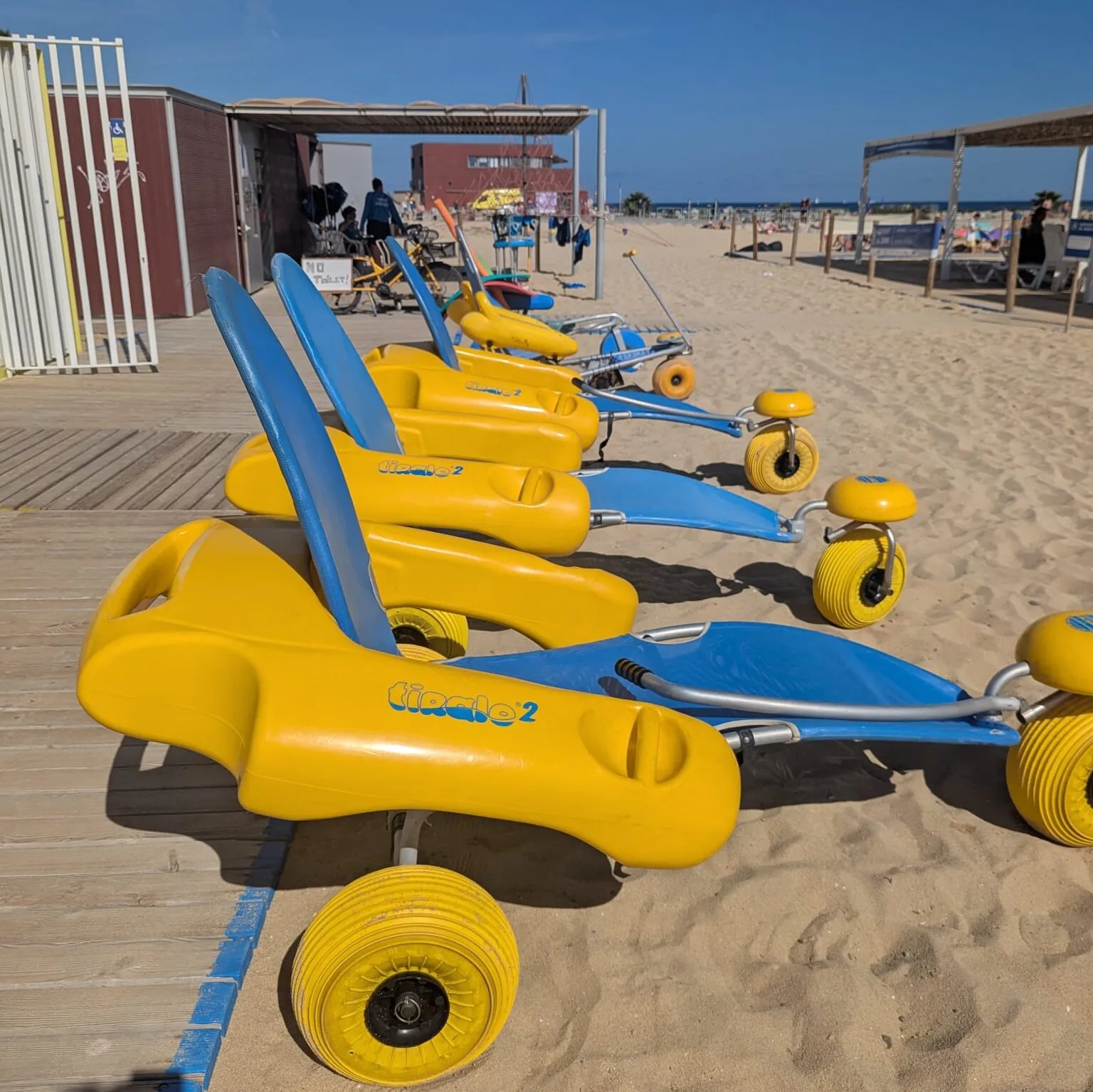
They had floating beach wheelchairs and a toilet with a hoist and a changing bed in it so that I could be lifted onto the beach chair. I went into the sea on one of the beach chairs, which was fun. Volunteers assisted me by pulling the chair over the sand and into the sea, and then my carer stayed with me. The sea was quite choppy, and it felt like I was on a rollercoaster as I went up and down with the waves. I had to sit facing the shore, or I would have repeatedly got a faceful of seawater. The sea was a bit chilly, but it was refreshing, as the temperature was about 30°C that day. After going in the sea I had a shower and went to dry off in the sun which felt great.
Park Guell
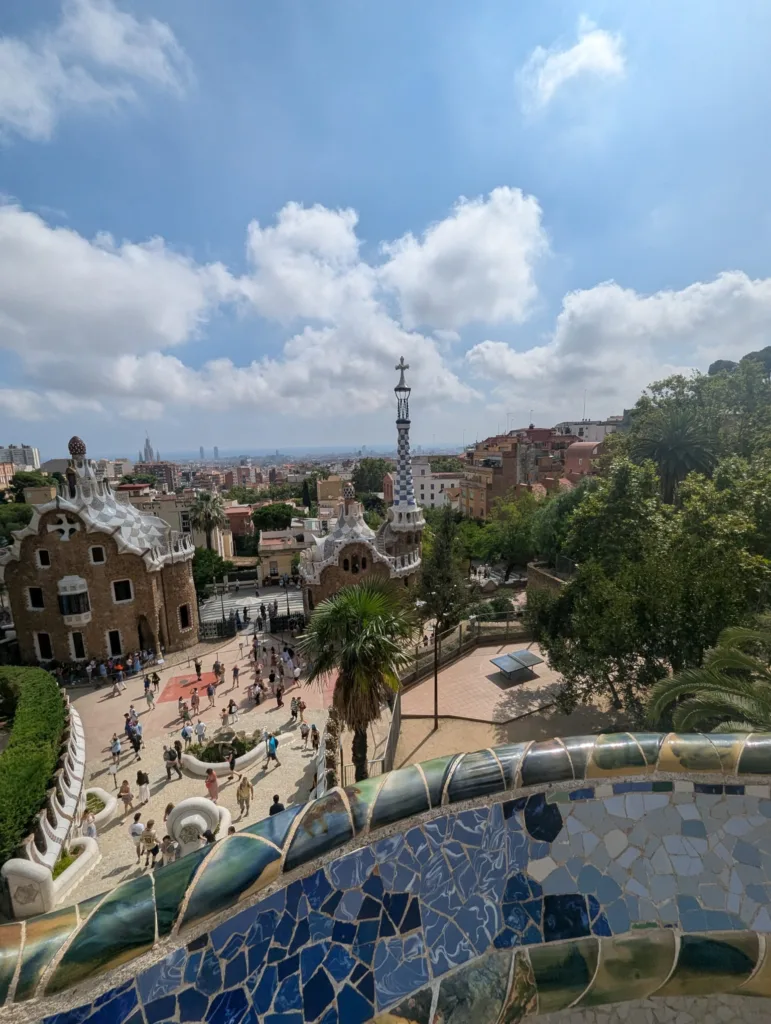


This park is another beautiful Gaudi creation. It was initially built for the upper class to live in a nice place away from the rest of the city. It’s got lots of natural spaces, beautiful houses, and stunning views over the city. Unfortunately for Gaudí, only 3 houses were ever sold (one of which he bought himself). So eventually, the place was purchased by the city council to turn it into a public park, which it is today.
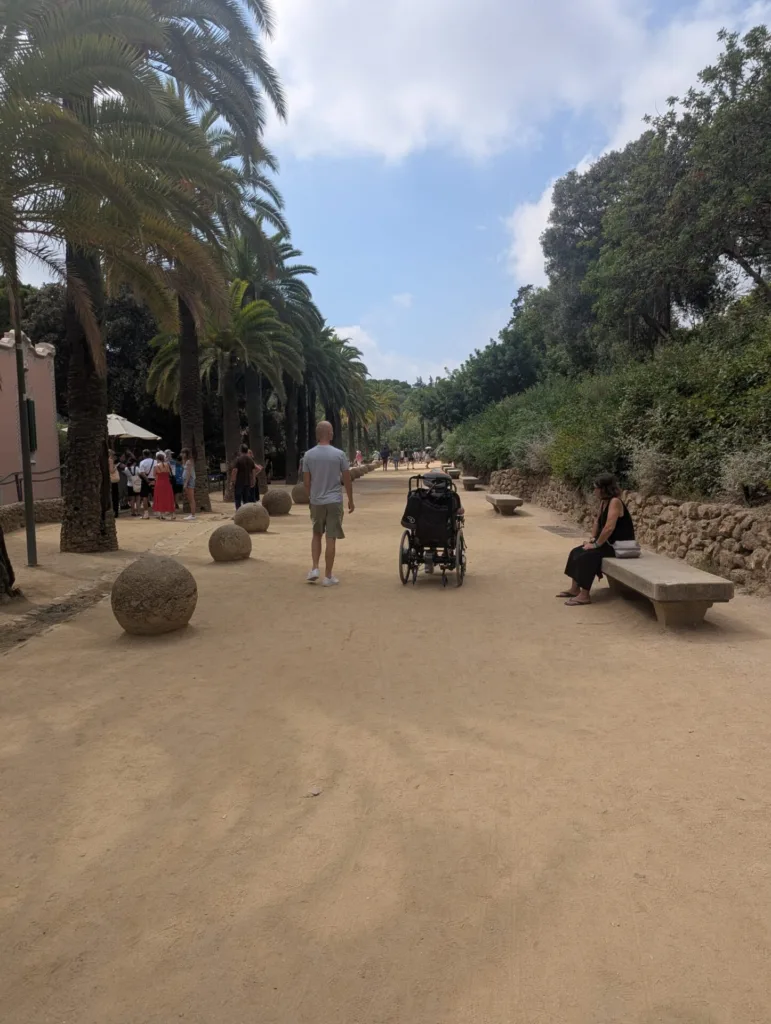
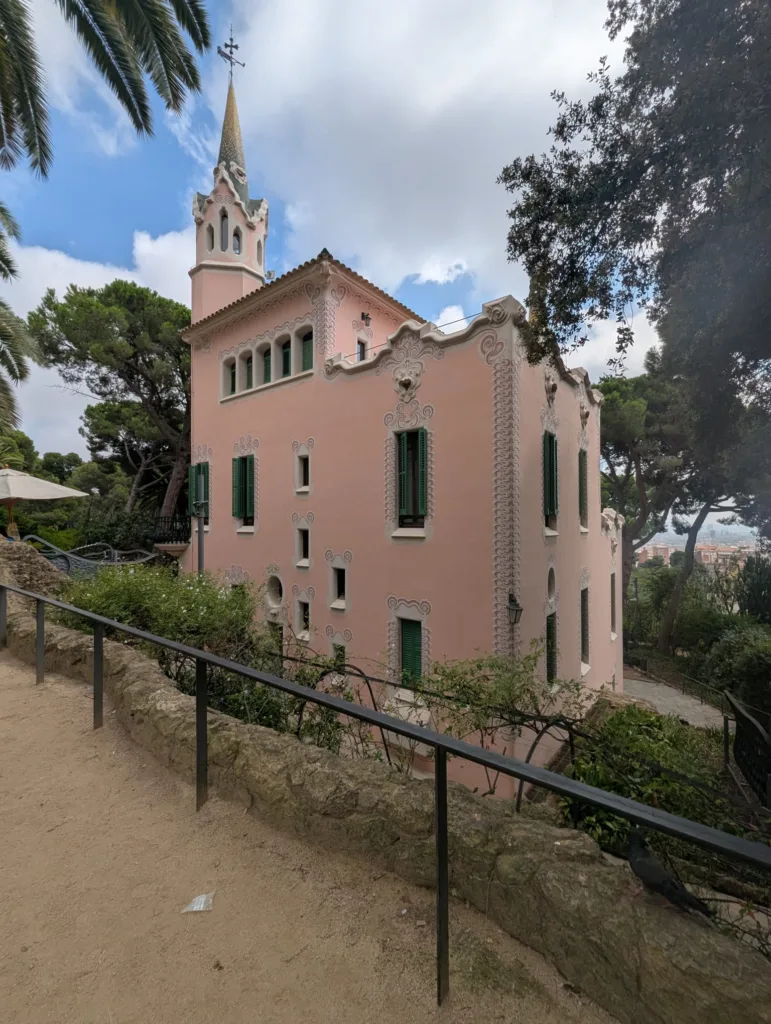
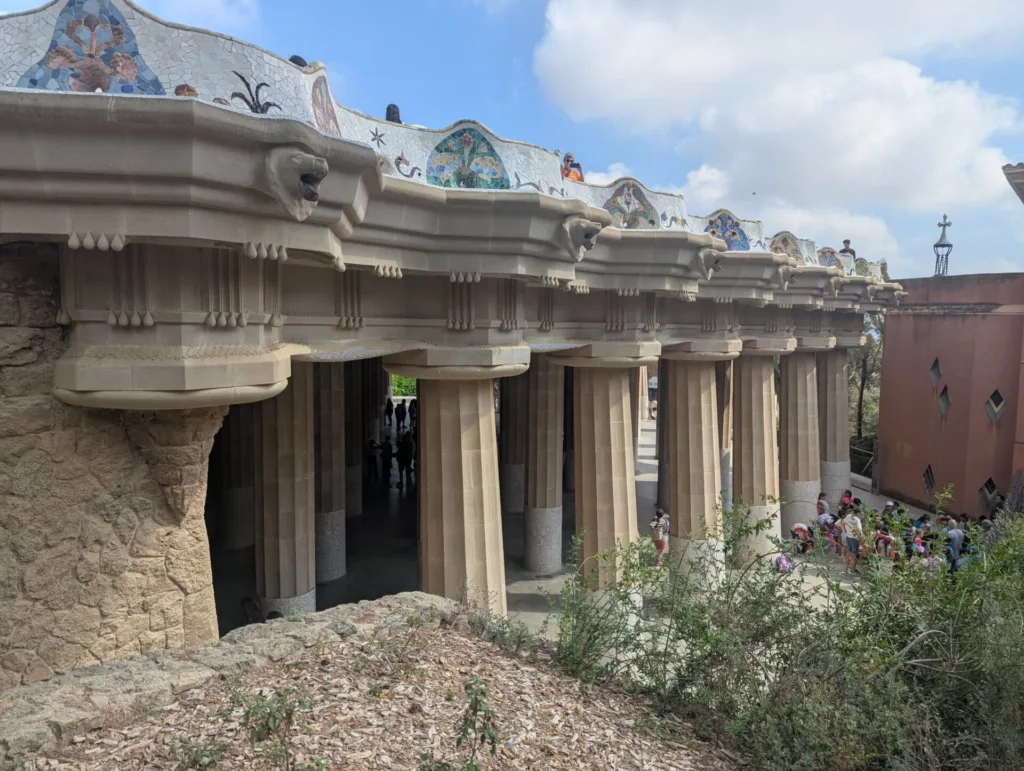
The park has pretty good wheelchair access. However, a lot of it is on steep hills, so it might be difficult in a manual wheelchair. Also, some of the pathways up the hill were a bit cobbled, so they weren’t very comfortable driving over.
They do have a map showing accessible routes for wheelchair users, which is useful. I decided to be a bit more intrepid and go up some of the steeper roots, which was entirely possible in my powerchair, but, like I said, it was a bit bumpy. There were great views up there, though.
Montjuic


Montjuic is a 184m hill next to the city. It is covered in trees, and there are various sites of interest located up there. A cable car and funicular can be used to get to the top, which is what we did. The cable car offers great views of the city, and it’s wheelchair accessible. I could drive straight into the car. There wasn’t a lot of room inside the car, but there was enough for me and the carers.
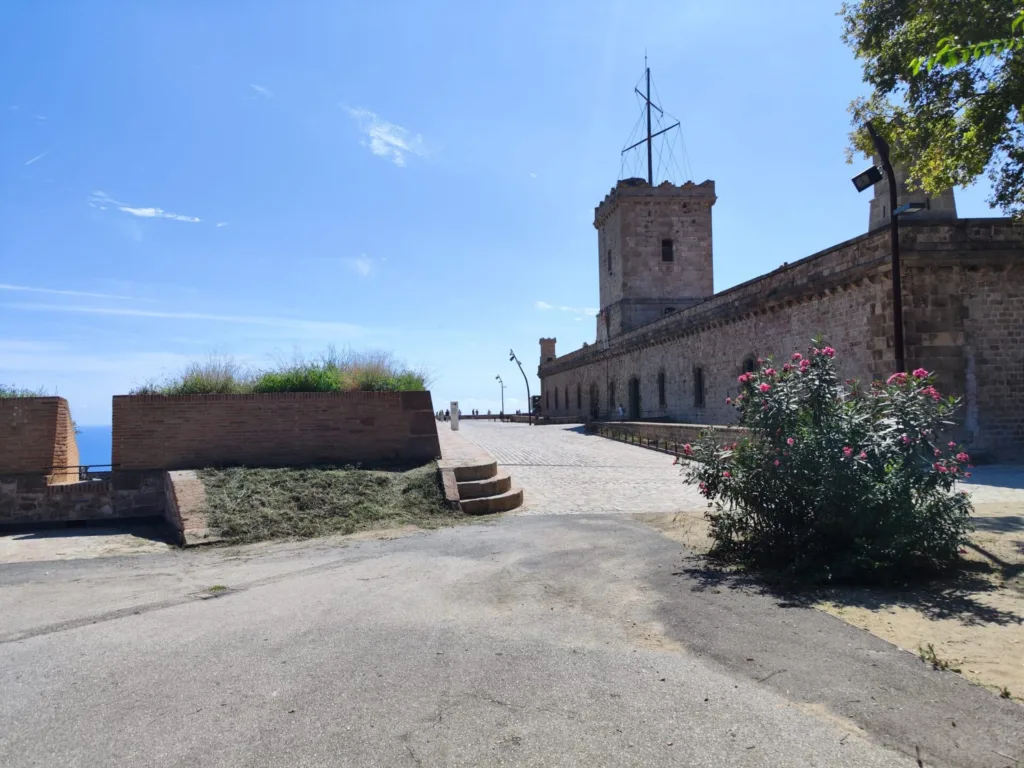
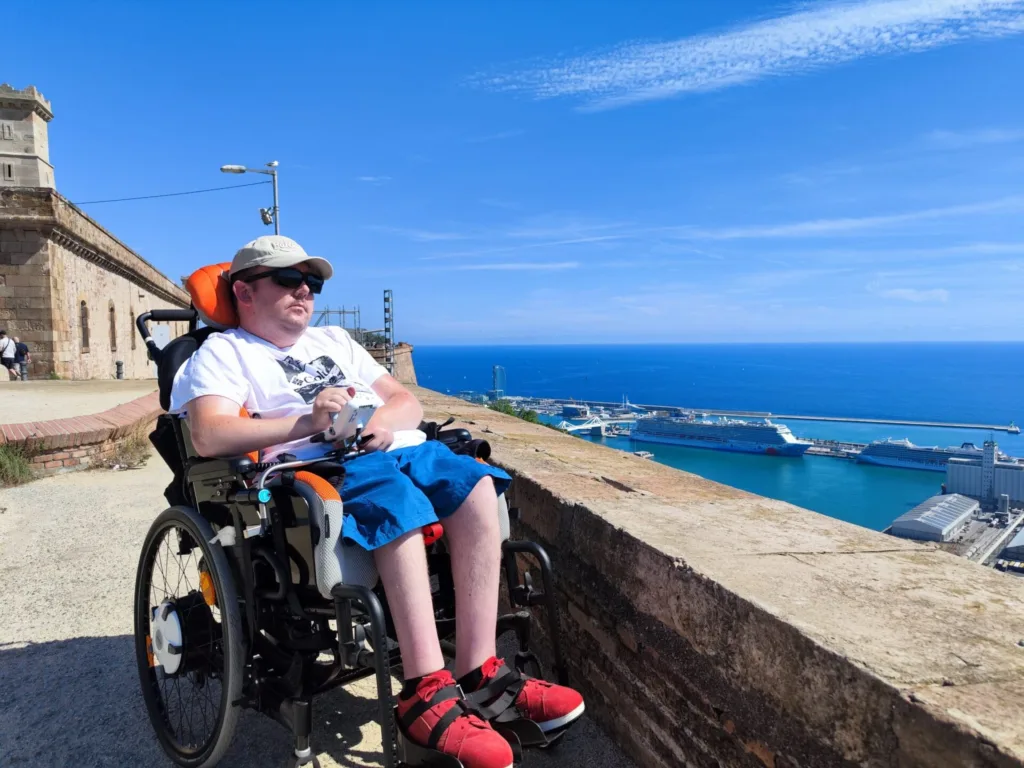

At the top, we visited the castle, built in the 17th century. The road leading up to it was very cobbled and quite uncomfortable. There were also many cobbles around the outside of the building. They did have a lift so we could go up to the parade ground area on an upper floor of the castle. This overlooked the harbour and the sea, offering great views of the area. I didn’t try going inside, though.
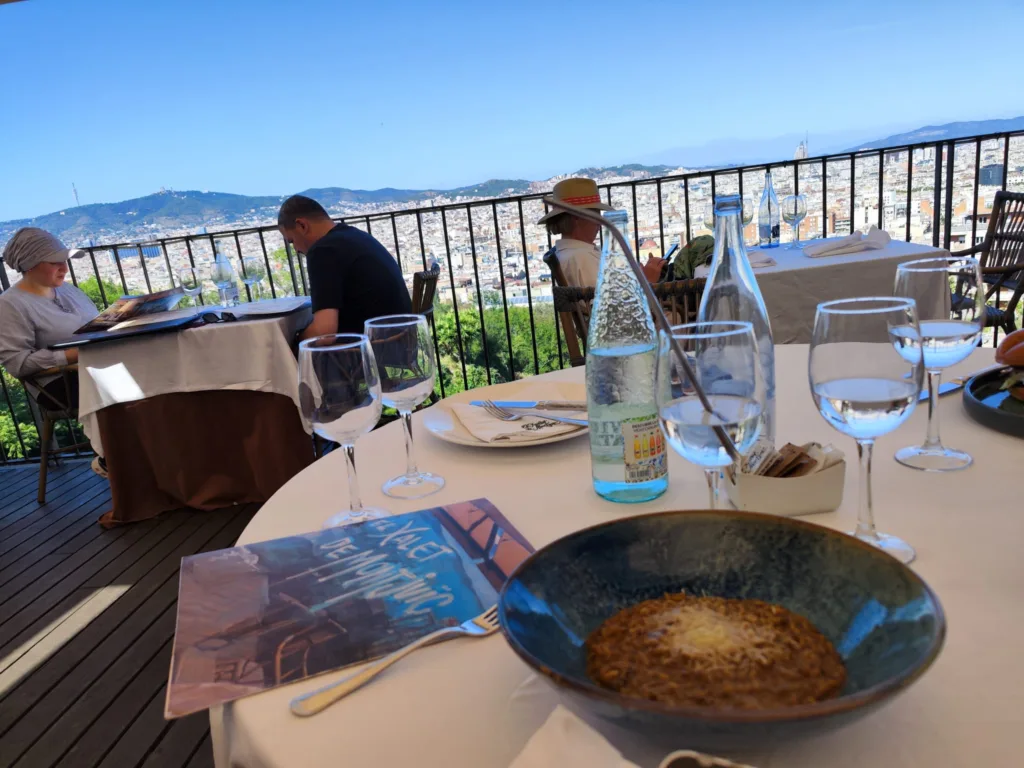
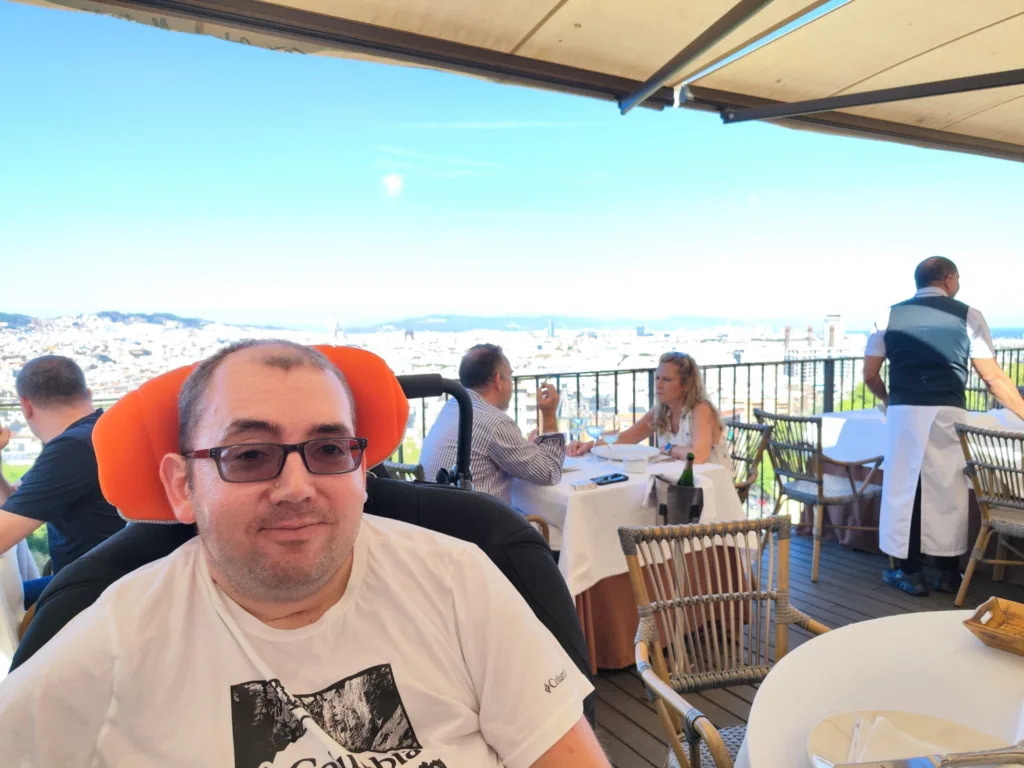
After the castle, we decided to try to find somewhere for lunch. We found a restaurant that was built onto the side of the hill, which looked nice. A lift took us down to a decked seating area overlooking the Barcelona skyline. It was a very expensive restaurant, but the views were worth it!
White rabbit Museum
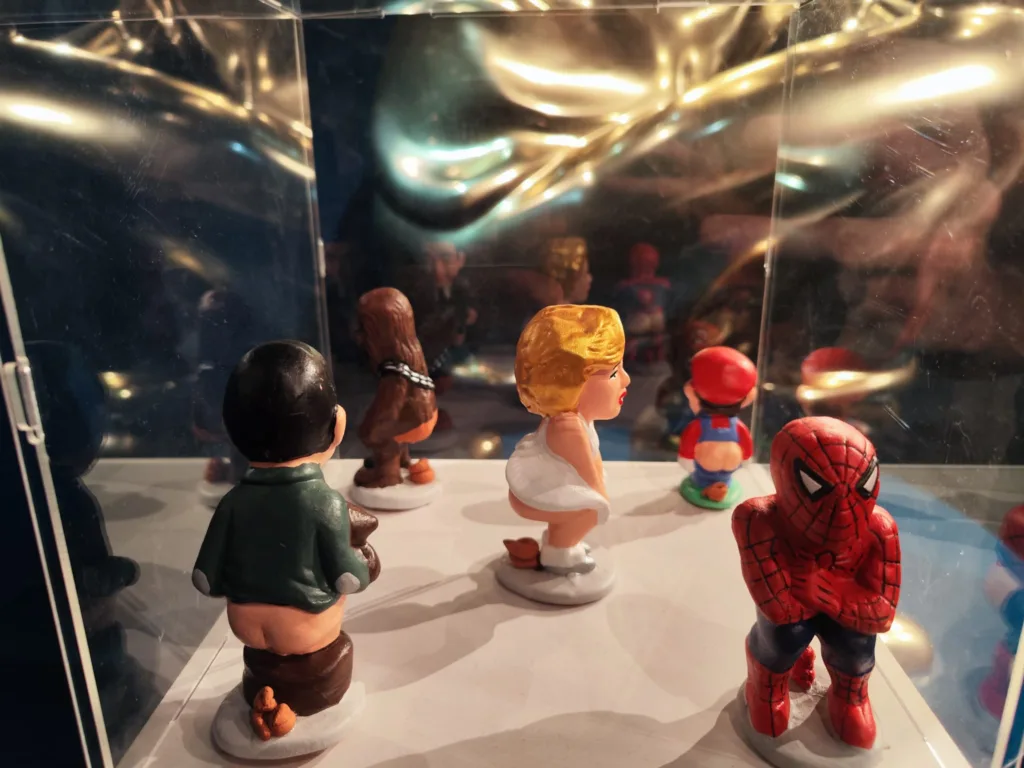
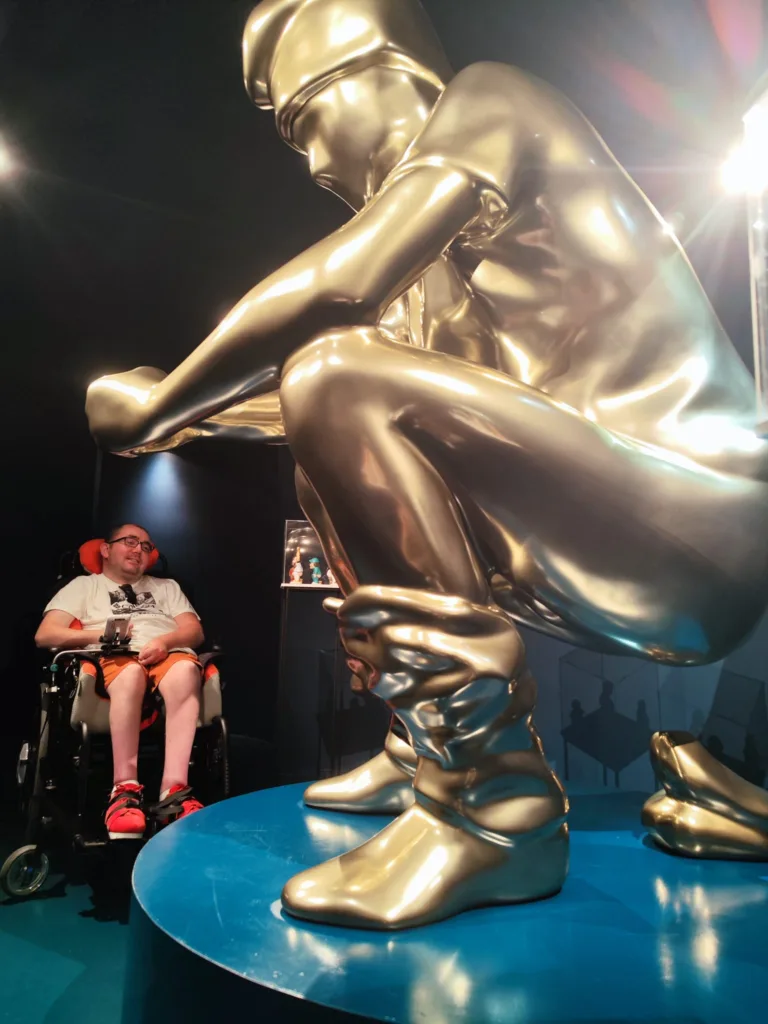
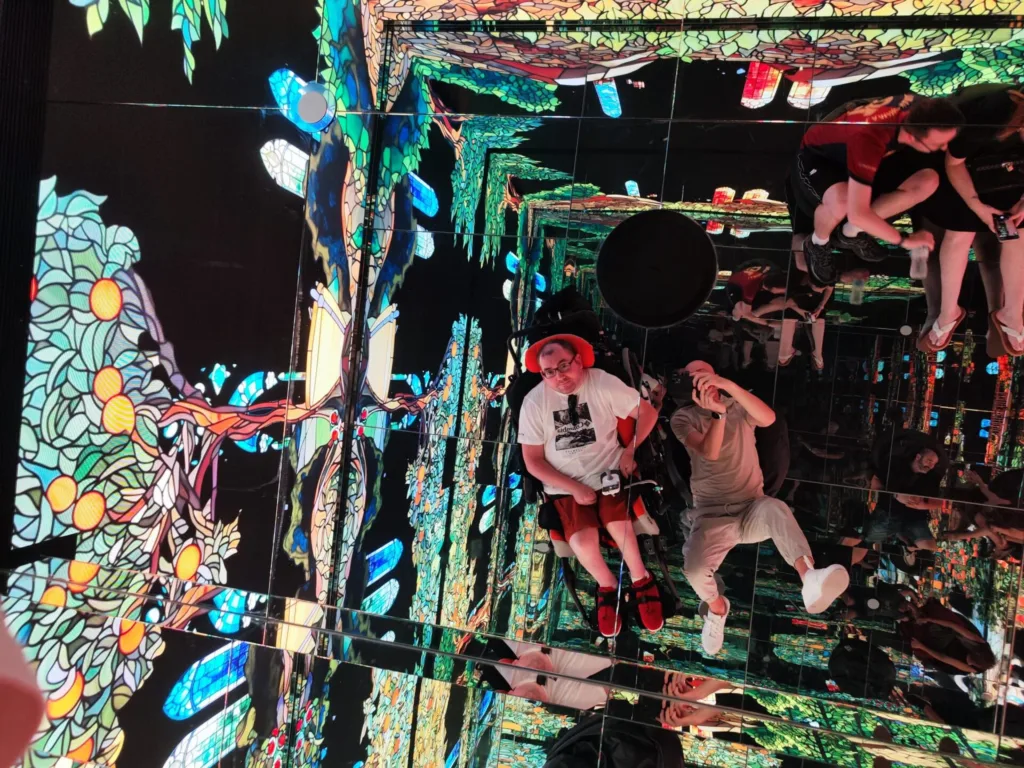

I visited a museum all about the culture of Barcelona. It contained interesting exhibits created by local artists to showcase different aspects of the city. The most memorable was about El Caganer, which means the shitter. It’s a little figurine of a person squatting and a pile of poop on the floor beneath them, believe it or not. There was a big one at the entrance. It’s supposed to bring good luck, and Barcelonians put it in their Christmas nativity displays. because what is more Christmassy then someone having a shit on the floor!
Hydrotherapy pool
The hydrotherapy pool at Mics Sant Jordi was relatively small compared to some that I have seen. We booked to use it on the day before we left. The hoist at this pool was the kind of hydraulic metal contraption which I haven’t seen before. It was different to the ones that you don’t get at swimming pools in England. The hoist had a seat attached to it, which I would have needed to be hoisted onto, but the seat was at an awkward angle. It was right over the edge of the pool, and it couldn’t be swung round. Plus, there were metal bars around the edge of the pool floor so you couldn’t move a hoist close enough. After much deliberation, we managed to get the hoist and me into the right position to get on the chair. It was a bit precarious because one wheel was over the water. It would have been easier if the chair could have detached and been wheeled away from the pool so that I could hoist it first.
CosmoCaixa science Museum
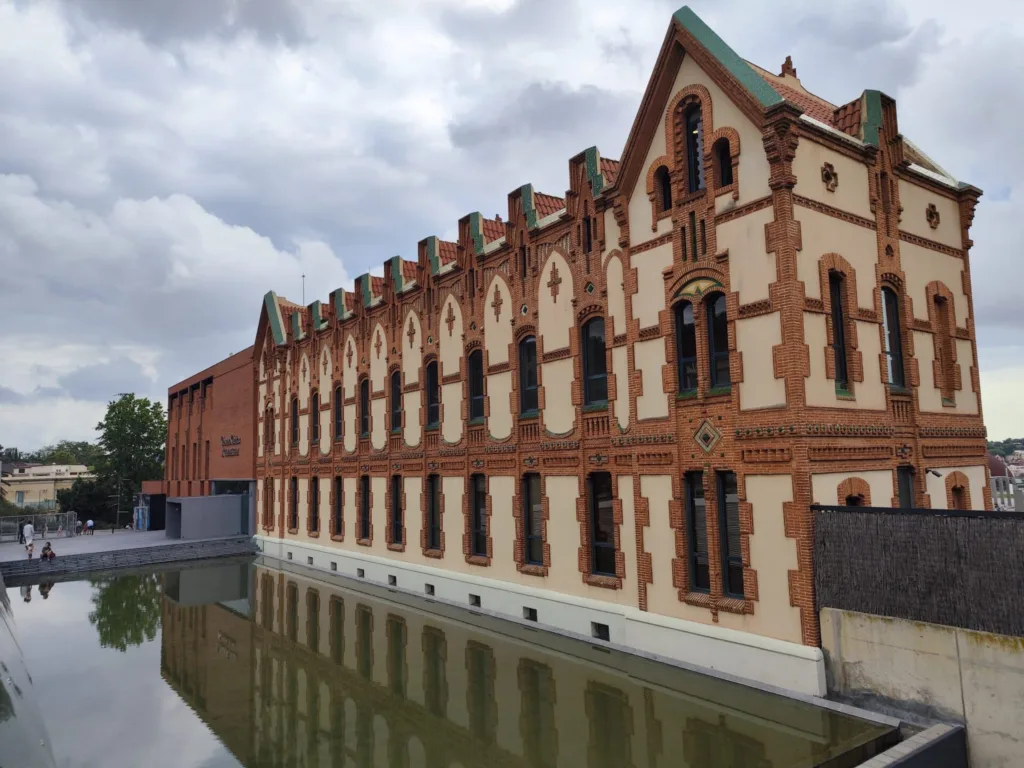
One day during the week it was raining so I decided to go to the CosmoCaixa Science Museum as I had read good things about It. it was a very interesting museum with lots of things to see and do. One of the main attractions is a big indoor rainforest, called “the flooded forest”. It is enclosed in glass so from the outside you can see fish swimming amongst the tree roots. A pathway that you walk through the forest and there are even some birds walking around.

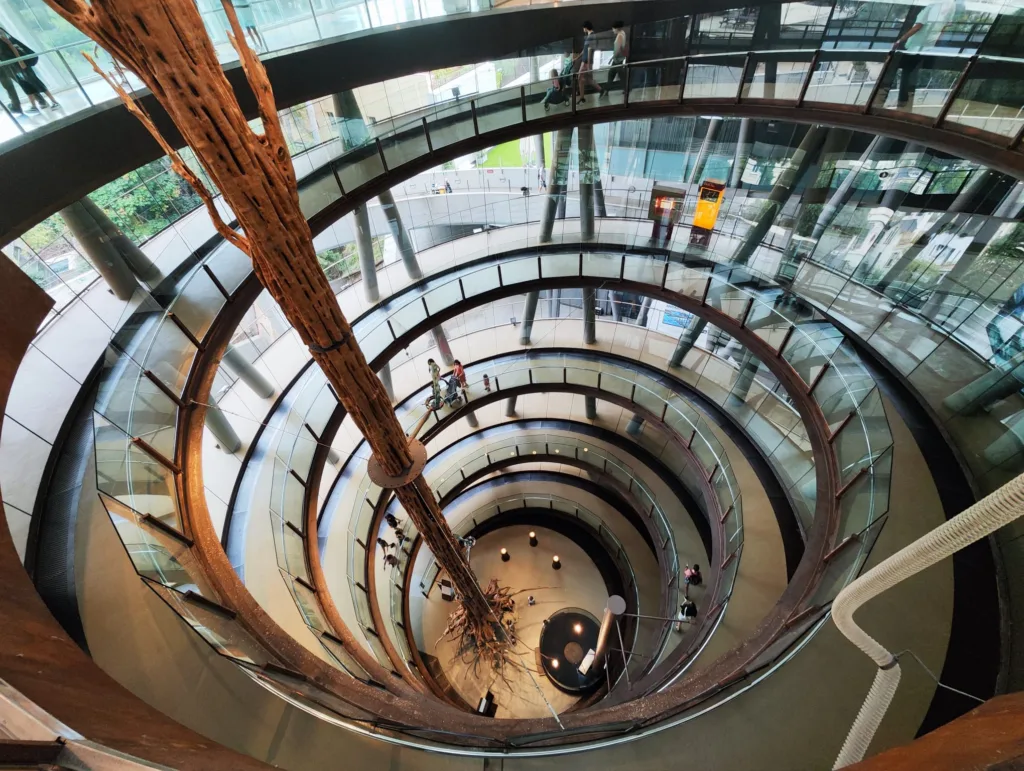
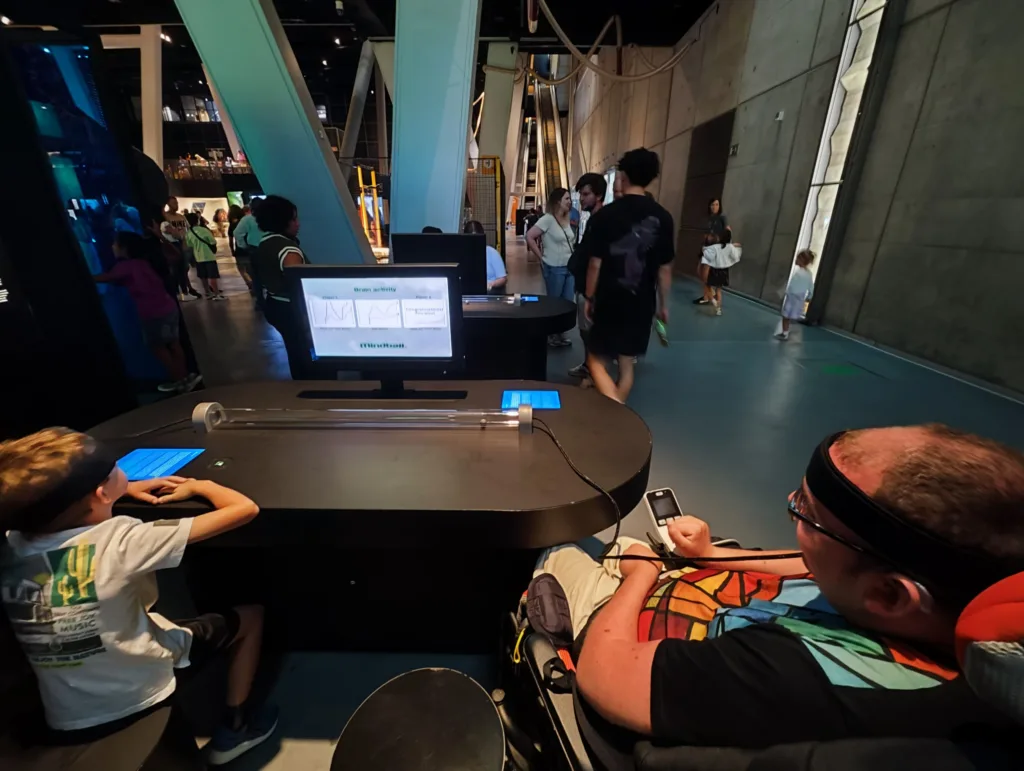
There were lots of hands-on exhibits throughout the museum including one which measured your brainwaves. You had to wear a headband and in front of you there was a ball in a horizontal tube. You play against someone else who is also wearing a headband, and the winner is the person who made the ball moved to your end. To move the ball you had to stay calm which would cause certain brainwaves which the ball responded to. I did it against one guy and the battle went on for quite a while with the ball initially staying in the middle. But eventually I won! Years of meditation have finally paid off.
Getting around Barcelona
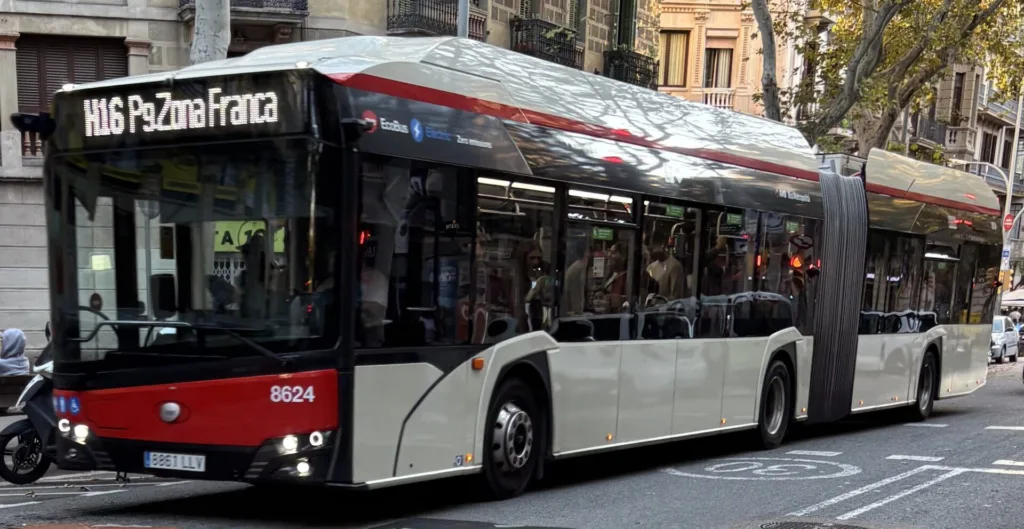
To get from place to place, we used a combination of public transport and walking. Outside our accommodation was a metro station, which was handy. I found the stations accessible, with level access between the platform and the train. 155 out of 165 metro stations in Barcelona have lifts and are accessible, which is much better than in other cities, like the London Underground.
All buses have ramps, so we were able to board the buses without any problems. We used buses and the Metro quite often, pretty much every day. In hindsight, I should have bought a “Hola Barcelona travel card” before I got there, which allows you to make unlimited journeys on public transport for a certain number of days. So it would probably have worked out cheaper and saved us the confusion of trying to use the ticket machines. But you live and learn!
Conclusion
Barcelona is an accessible city, in my experience. Mics Sant Jordi, where we stayed, was great with accessible apartments, a nice restaurant, and a hydrotherapy pool. It would have been better if we had a balcony, like some of them do, but still, it was nice. The beach was fantastic and very accessible. It had everything we needed – hoist, beach wheelchairs, accessible changing room, volunteers, and decking. There are lots of interesting things to see and do (the Sagrada Familia is a must), and it was pretty easy to get around the city on public transport.

